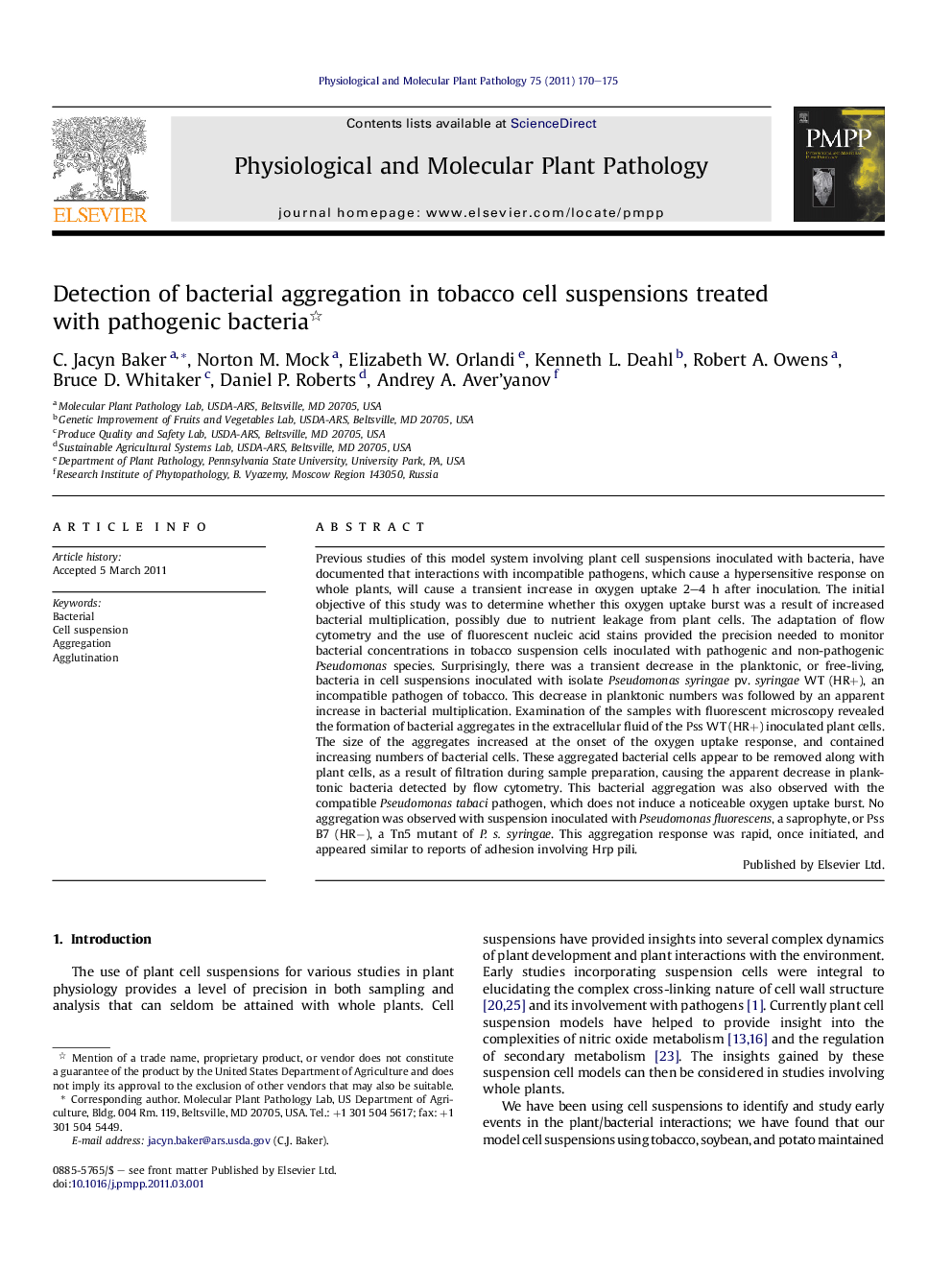| Article ID | Journal | Published Year | Pages | File Type |
|---|---|---|---|---|
| 2836583 | Physiological and Molecular Plant Pathology | 2011 | 6 Pages |
Previous studies of this model system involving plant cell suspensions inoculated with bacteria, have documented that interactions with incompatible pathogens, which cause a hypersensitive response on whole plants, will cause a transient increase in oxygen uptake 2–4 h after inoculation. The initial objective of this study was to determine whether this oxygen uptake burst was a result of increased bacterial multiplication, possibly due to nutrient leakage from plant cells. The adaptation of flow cytometry and the use of fluorescent nucleic acid stains provided the precision needed to monitor bacterial concentrations in tobacco suspension cells inoculated with pathogenic and non-pathogenic Pseudomonas species. Surprisingly, there was a transient decrease in the planktonic, or free-living, bacteria in cell suspensions inoculated with isolate Pseudomonas syringae pv. syringae WT (HR+), an incompatible pathogen of tobacco. This decrease in planktonic numbers was followed by an apparent increase in bacterial multiplication. Examination of the samples with fluorescent microscopy revealed the formation of bacterial aggregates in the extracellular fluid of the Pss WT (HR+) inoculated plant cells. The size of the aggregates increased at the onset of the oxygen uptake response, and contained increasing numbers of bacterial cells. These aggregated bacterial cells appear to be removed along with plant cells, as a result of filtration during sample preparation, causing the apparent decrease in planktonic bacteria detected by flow cytometry. This bacterial aggregation was also observed with the compatible Pseudomonas tabaci pathogen, which does not induce a noticeable oxygen uptake burst. No aggregation was observed with suspension inoculated with Pseudomonas fluorescens, a saprophyte, or Pss B7 (HR−), a Tn5 mutant of P. s. syringae. This aggregation response was rapid, once initiated, and appeared similar to reports of adhesion involving Hrp pili.
► Bacterial aggregation occurred in tobacco cell suspensions 3–4 h after inoculation. ► Flow cytometry was adapted to detect subtle changes in planktonic bacterial concentrations. ► The onset of the aggregation occurred within 30 min. ► Only pathogenic bacteria aggregated.
